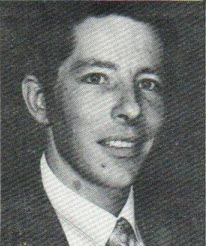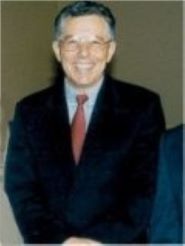Neel Smuts
SABC
196x to 1992
No articles about the SABC and the introduction of television to South Africa would be complete without mentioning Neel. He received an ARTES award for engineering in 1978, the only engineering award ever presented by the SABC.
Neel Smuts, Deputy Director-General : Technology, and I had a very tenuous relationship. I think he respected me as an engineer, but I was not one of his ‘yes’ men. This profile is based on my interactions with Neel over a period of 20 years.
All attempts to contact Neel for an interview have failed, with no response to email or social media by Neel. Neel lives in a gated community in George, South Africa.
Brian Horn (SABC - 1971 to 1989)

I first met Neel in 1970 when I attended the International Broadcasting Convention (IBC) at Grosvenor House in London. I was working for Rhodesia Television, a country under sanctions from the British, and so was unable to attend. I over came this obstacle by getting a South Africa passport and travelling as a employee of a South African company. Neel was employed by the SABC, but as South Africa at that time had not announced it was going to implement a television service, Neel too attended IBC under the guise of working for a different South African company. Our attendance required that we take steps to avoid the press, who were interested in getting a interview.
The next time we crossed paths was in 1972 when I was an Assistant Engineer on the team that was designing the Television Training Center (TTC), a facility that was opened in 1974 to train production and
engineering staff for the planned launch of TV in 1976. Together with several other SABC engineers, I was seconded to work for Fischbach & Moore Systems (FMS), the American contractor hired to build the
Television Center in Auckland Park. Neel was one of the people on the SABC planning team to whom FMS reported. In the TTC design I proposed a different way of handling the color encoders and system timing to
that proposed by Ellis Griffiths from Thames Television (UK). Thames Television were a subcontractor to FMS.
Ellis wanted all the color encoders to be installed in the main electronics control (MEC) area where one person could be responsible for them as he said they were known to be unstable and required frequent
alignment. The color encoders were the devices that converted the RGB (Red, Green and Blue) signals from the studio cameras and telecine machines (film and slide sources) into composite television signals. The
problem was to route the RGB signals from the telcine area to the MEC area it required three video cables for each encoder which had to be exactly the same length, any differences would result in color
registration errors. I proposed putting the color encoders in the telecine machines and running just one cable to the MEC area. My reasoning being the design of the color encoders was advancing rapidly and
stability would no longer an issue, therefore install the color encoders in the telecine machines and let the telecine staff manage them. The consensus was to adopt my plan, but install the additional cables
as a fallback. They were never used.
I was responsible for the operation of the TTC and training of engineers in the TTC for the first year. Each morning the team used to have to align the cameras, color monitors and check the color encoders as they were turned off at night and took some time to stabilize their registration once turned on. In a major policy change I decided to keep all equipment operation 24 hours a day, the result a significant reduction in the daily work load as minimal daily adjustments were required. A practice that became standard in SABC's TV operations.
Neel always had a right hand man who he looked to for technical guidance on what to do. In the early 1970's it was August Breedt, Bas Loeve had the role for several years during the TV1, 2 & 3 projects.
After my run in with Neel over the color encoders, August came to see me to offer some advice on how to handle Neel. He advised me that Neel liked "YES" people, never to go up against him in public as he would
never forget it. Instead take any ideas to him, convince him they were his, and he would fight to get them implemented. August was a great mentor and I certainly used his advice to manage Neel over the years
that followed.
The design or lack thereof, for the regional switching centers in Durban, Cape Town, Port Elizabeth and Bloemfontein was a Neel creation with Bas Loeve's input. It was a project which kept Theuns Nel and I busy for about a year. Purchases for the centers were tacked on to TV1 orders without having a design. Bas had come from the radio studios head office team and was learning on the job, Neel had someone who said "yes".
In 1974 the Harvard Business Review published an article "Management Time: Who's got the monkey?". Neel called me in to his office and gave me a copy. I think Neel looked in the mirror too often! I had a great team of skilled engineers who made proposals, reviewed them with the their peers and then implemented them. They knew when to ask for advice or help.
in 1981 I requested to go to the NAB Convention (Nation Association of Broadcasters) in Las Vegas, my requested was taken to an engineering management committee meeting by my boss, Phil Bartel. Neel blocked the
request. I then applied for vacation time to attend the convention, this created a problem as engineering management could not agree and so the request was escalated to the Director General, Jan Swanepoel. He
not only approved my trip to NAB, but decided I did not have to use vacation time and the SABC would bear the costs of the trip.
As approval had only given days before the event I was unable to find a hotel as the event had tens of thousands of attendees. I reached out to Piet Moolman of Radiokom, the local RCA agent, to see if RCA had
any rooms available. They had booked a large block of rooms at the Sahara and were able to give me one. They asked if I had transport from the airport to the hotel and offered to send a car to pick me up when I
arrived.
When my SAA flight arrived in New York I made my way to my connecting flight to Las Vegas, only to find my boss Phil Bartel and Neel Smuts were on the same flight. Phil Bartel had been given an upgrade to business
class, Neel was back in coach with me. I asked Phil how they were getting to their hotel and was told they were going to take a taxi, since I had a car coming to pick me up I offered to drop them off at their
hotel. On arrival there was a person holding a sign with my name on it and I was taken out to the stretch limo waiting for me. The look on their faces was priceless,

In 1986 Neel was appointed to the State Presidents Council for Electronics, he nominated me to be the SABC representative on two task groups - Data Communications Equipment and Data Terminals. After getting cleared and granted Secret clearance I served on these task groups together with others from government statutory organizations such as SAR, SAPO, ESCOM. CSIR, SAA, ISCOR,...
Neel never saw computer technology or software as being an engineering function, job titles which included the word "Engineer" were reserved for radio and television staff who had an engineering degree and who
could qualify, after suitable experience as a "Professional Engineer". This resulted in those managing a department being called "Chief Engineer" or "Head" if it was a computer department.
The group of computer related departments, that is operations, engineering and software development during the 1980's were managed by Financial Services (Coen Nolte), News (Carl van der Merwe) or Engineering
Services (Phil Bartel). By 1987 Phil Bartel consolidated the three departments into the group known as Computer Services.
In May 1989, after Christo Viljoen (Dean of the Faculty of Engineering, Stellenbosch University) had taken over as SABC Chairman of the Board, he promoted Neel to be Deputy Director General: Technology and
appointed Dr. S. P. Viljoen (Stellenbosch University) as General Manager: Technology Research and Strategic Development. Brian Horn's position as Head: Computer Operations and Engineering was abolished with
Brian being appointed Chief Engineer: Special Projects and Carl Ferreira being promoted to Chief Engineer: Computer Technology, both reporting to Dr. S. P. Viljoen.
Neel had taken over control of all aspects of computer engineering by the restructuring, with the assistance of Dr. S. P. Viljoen.
In 1992 Neel became managing director of SENTECH, the SABC division responsible for signal distribution services. When Neel took over as MD of SENTECH, he took his right hand man, Carl Ferreira with him. Neel's final legacy most probably occurred in 1996 at the "The Great Digital Debate: Sentech versus Orbicom", hosted by the Centre for Cultural and Media Studies at the University of Natal where he proposed that South Africa choose analogue channels for satellite distribution. Jock Anderson, the Orbicom managing director, made the case for digital channels, "the debate is not whether to go digital, but when ... clearly, the world is going digital". Jock was one of the original SABC team members working on the TV1 project. South Africa finally decided on digital satellite distribution.